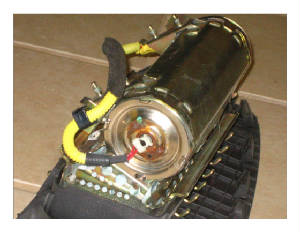|
This page is under construction
Passenger's Frontal Airbags
This page includes:
-
Single stage passenger's frontal airbags
-
Dual stage passenger's frontal airbags
-
Smart airbags (Passenger's Frontal)
-
Occupant position sensors.
-
Weight sensors
-
Seat belt tension sensors
For more advanced information see the power point presentation:
Since the beginning
of their development, the passenger’s frontal airbag has probably been the biggest controversy in the automotive industry.
The debate over the safety of passenger air bags has been an ongoing thing since the mid ‘60s. As a result, the problems
with this system have generated most all of the new technology we see today.

This is the single stage pyrotechnic inflated
passenger’s frontal airbag.
Though they look a lot different than the driver’s
airbag they work basically the same. The biggest difference is; to fill the larger space between the dash and the seat, the
bag must be much larger. To fill this larger bag, at the same speed as the driver’s, a much larger volume of gas is
required and it must be distributed over a wider area. Because of this, most passengers’ pyrotechnic type inflators
are long rather than round like the driver’s.
The single stage pyrotechnic inflator (Fig
2-5-2)
shows one of the exceptions but, notice the larger chamber containing the propellant. Both the long and the round inflators
work on the same bases as the driver’s airbag, the igniter receives an impulse from the control module; it then heats
the Sodium Azide, starting the chemical reaction that produces large amounts of Nitrogen Gas to feel the bag.
In later years many manufacturers turned to
a compressed gas inflator (Fig 2-5-3). These inflators no
longer use Sodium Azide or any type of chemical reaction. They are simply a storage canister that is felled with compressed
Nitrogen or Argon Gas. The pressure stored in most of these canisters is rated at 3000 psi. Some of the later ones from about
2004-up are rated at 4000 psi. This compressed gas is held by a disc shaped bladder, (much like a coke bottle cap), when the
igniter is energized, it melts the bladder and the gas is allowed to escape into the bag.
|
|
The dual depth air bag deploys from the front passenger side within the instrument panel. When the small air bag is required,
a tether holds the air bag back to the smaller size, and gas is vented from the module housing. For the larger air bag deployment,
the tether is released, the module-housing vent is shut off, and the air bag is allowed to expand to its full size. GM says
that they will be using this system in all of their vehicles soon.
|
 |
|
|
|
 |
|
General Motors' "dual depth" system uses sensors to look at the force of the collision in real time, as well as the weight
of the occupant and the position of the seat. The vehicle's computer then determines the appropriate size and force of airbag
deployment. "This is especially important on the passenger side because [unlike the driver] the occupant can sit anywhere
and in any position he wants," explains Vitet. Dual-depth frontal airbags are currently available on the 2006 Buick Lucerne
and Cadillac DTS ( Click here to see video of how they work).
|
 |
|
|
|
|

